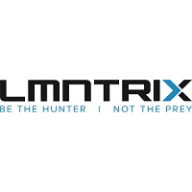

Binary Defense MDR and LMNTRIX Active Defense compete in providing managed detection and response services. Binary Defense MDR appears to have an upper hand due to its exceptional customization and integration capabilities, making it more adaptable for diverse environments.
Features: Binary Defense MDR offers customizable features, smooth SIEM and ticketing functions, excellent compatibility with existing tools, and responsive support, which makes it a preferred choice for small teams. LMNTRIX Active Defense is known for zero false positives, thanks to incident validation, constant anomaly hunting, and effective threat detection, though some users find its dashboard complex.
Room for Improvement: Binary Defense MDR needs to enhance support for non-English speakers, improve API connection integrations, and develop its own SIEM offering. Users also seek more statistical analysis for service level agreements. LMNTRIX Active Defense users report issues with the respond agent, seek more multifactor authentication options, and need improvements in dashboard complexity and playbook setup guidance.
Ease of Deployment and Customer Service: Binary Defense MDR is noted for flexible deployment options, supporting cloud and hybrid environments, with highly responsive customer service. LMNTRIX Active Defense, typically using on-premises deployment, receives praise for efficient technical support, ensuring a smooth user experience.
Pricing and ROI: Binary Defense MDR is competitively priced, often slightly below similar offerings, providing value by replacing in-house analysts and adding peace of mind. LMNTRIX Active Defense, though not the cheapest, offers comprehensive monitoring and validation, delivering significant cost savings and enhanced security postures for its pricing.
| Product | Market Share (%) |
|---|---|
| Binary Defense MDR | 0.6% |
| LMNTRIX Active Defense | 0.6% |
| Other | 98.8% |

| Company Size | Count |
|---|---|
| Small Business | 5 |
| Midsize Enterprise | 4 |
| Large Enterprise | 7 |
Binary Defense provides a Managed Detection and Response service using an Open XDR strategy that detects and isolates threats early in the attack lifecycle. Expert security analysts in the Binary Defense Security Operations Center leverage an attacker’s mindset, monitoring your environments for security events 24x7x365 and acting as an extension of your security teams. When a security event occurs, Binary Defense analysts triage, disposition, and prioritize the event. Analysts conduct full kill chain analysis and supply tactical and strategic mitigation recommendations to your security team with the goal of increasing your organization’s security posture against the latest adversary threats.
Visit us online at https://www.binarydefense.com
LMNTRIX has reimagined cybersecurity, turning the tables in favor of the defenders once again. We have cut out the bloat of SIEM, log analysis, false positives and associated alert fatigue and we created new methods for confounding even the most advanced attackers. We combine deep expertise with cutting-edge technology, leading intelligence, and advanced analytics to detect and investigate threats with great speed, accuracy, and focus. We believe that in a time of continuous compromise you need continuous response – not incident response. Our approach turns inward and assumes that you’re already breached and that you’re continually going to be breached, so we take a pro-active, offensive, hunting, adversarial pursuit stance as opposed to a reactive, defensive, legacy stance with analysts staring at a SIEM console wishing they could detect an APT.
LMNTRIX Active Defense is a best in class Managed Detection & Response (MDR) service that detects and responds to advanced threats that bypass perimeter controls. The outcomes we deliver clients are validated breaches that are investigated, contained and remediated. All incidents are aligned to the kill chain and Mitre ATT&CK frameworks and contain detailed investigative actions and recommendations that your organisation follows to protect against the unknown, insider threat and malicious attacker.
We are a partner which becomes an extension of your internal team, can augment your MSSP, or be a full-service SOC as a service security solution.
Active Defense is made up of 3 elements:
LMNTRIX GRID (XDR) – This is our cyber defence SaaS platform that provides a new utility model for enterprise security, delivering pervasive visibility, automated threat detection & prevention, threat hunting, investigation, validation and unlimited forensic exploration on-demand and entirely from the cloud. It is a single investigative platform for insights into threats on enterprise, cloud, hybrid, and industrial control systems (ICS) networks. The LMNTRIX Grid delivers unique advantages over current network security solutions. It is a holistic and multi-vector platform with unlimited retention window of full-fidelity network traffic, innovative security visualizations, and the ease and cost-savings of an on-demand deployment model.
LMNTRIX Technology Stack –This is our powerful proprietary threat detection stack that is deployed onsite, behind existing controls. It’s made up of network sensors, endpoint agents and deceptions everywhere. It combines multiple threat detection systems, with deception everywhere, machine learning, threat intel, correlation, static file analysis, heuristics, and behavior and anomaly detection techniques to find threats in real-time. It decreases alarm fatigue by automatically determining which alerts should be elevated to security events, and reduces false positives by requiring consensus across detection.
LMNTRIX Cyber Defense Centers - While these technologies are without peer, what sets us apart from the pack is our team of cybersecurity professionals who continually monitor our clients environments 24x7 while simultaneously hunting threats internally as well as monitoring developments on the deep and dark web. Our CDC's are a global network of cyber defense centers with highly trained and certified intrusion analysts who provide constant vigilance and on-demand analysis of your networks. Our intrusion analysts monitor your networks and endpoints 24x7, applying the latest intelligence and proprietary methodologies to look for signs of compromise. When a potential compromise is detected, the team performs an in- depth analysis on affected systems to confirm the breach. When data theft or lateral movement is imminent, our automated perimeter containment blocks attackers in their tracks while endpoint containment feature makes immediate reaction possible by quarantining affected hosts, whether they are on or off your corporate network, significantly reducing or eliminating the consequences of a breach.
We monitor all Managed Detection and Response (MDR) reviews to prevent fraudulent reviews and keep review quality high. We do not post reviews by company employees or direct competitors. We validate each review for authenticity via cross-reference with LinkedIn, and personal follow-up with the reviewer when necessary.